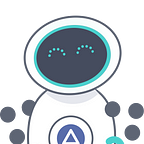Putting Compassion into Code with Limbix CTO, Judy Liu
Each week, clinical trial participants using Limbix Spark complete the Patient Health Questionnaire (PHQ-8), a measurement of depressive symptoms, in their app. The PHQ-8 is an important measurement for determining the effectiveness of Spark, an investigational treatment for adolescent depression — but it’s also one of the ways the Limbix team makes sure the teens in their clinical trials are safe. If a teen’s PHQ-8 score passes a certain threshold, indicating that their depressive symptoms are more severe, a push alert is sent to Limbix’s study team. They then determine a course of action to ensure the participants’ safety.
It sounds simple enough, but behind that chain of events are lines of code. And behind that code is a small but mighty engineering team led by Limbix CTO, Judy Liu.
Liu is acutely aware that the stakes are high for every engineering choice made for a medical device: especially when teens are on the other side of the screen. If anything in the code breaks, notice of a user’s PHQ score deterioration might not go out to the study team — and a user might not get the help they need. Every day, Liu’s team is reminded how much the details behind their work matters.
Liu, for her part, finds herself energized by this kind of critical thinking — “really understanding the environment that your product is used in, and really understanding the motivation behind a product,” she says. Throughout her career in tech, the Illinois-turned-California local has worked hard to deeply consider product ecosystems. Whether Liu was working on mobile apps for companies like Palm and TripIt, or working on virtual reality at Facebook, she was always drawn to bigger questions: Why are we building this feature? How will stakeholders use it? What purpose does the product serve?
This ethos has informed her role since she joined Limbix in 2017. As the CTO of a growing start-up, Liu confronts questions of context every day. The job is dynamic and involves more than simply building code, she explains: the engineering team is constantly in conversation with the research, product, and UX teams about why they’re building what they’re building.
Those conversations involve answering questions about how providers and patients will interact with each feature, or how Spark’s back-end will integrate with electronic health records (EHR). For Liu and her engineers, data privacy and HIPAA compliance are a top priority as they build and iterate on Spark.
The engineering team also manages Limbix’s “data warehouse,” which consists of de-identified product data that can shed light on trial participants’ engagement with the app, as well as their symptoms of depression, anxiety, and functional outcomes. This data helps the research and product teams understand how teens are interacting with Spark. Beyond monitoring that data, Liu’s engineers have designed tracking measures for identifiable personal and health information in order to build “an audit trail, essentially, for these pieces of data” — which is a standard healthcare requirement, Liu explains. These tracking measures help Limbix’s clinical researchers understand when the data has been viewed and by whom.
She’s the first to admit that building the bridge between complex health care regulations and engineering involves a steep learning curve. Deep subject matter knowledge has proven critical to Limbix’s mission, just as much as technical expertise. “How do you translate this sort of vague regulatory rule into code?” she says. “What does it mean that there’s an audit trail for e-signatures? What type of security policies do we need to have in place?”
For Liu, answering these questions is a welcomed challenge. “What really gets me excited is that if we can get this to work, we can really build a scalable solution to provide evidence-based care to a lot of kids out there…at very accessible price points,” she says, envisioning a world where all kids enrolled in Children’s Health Insurance Program (CHIP) could eventually use Spark.
“The prescription digital therapeutics industry is brand new, and it’s trying to figure out how it fits in the healthcare ecosystem. We’re kind of the new kids on the block,” she says, with a laugh.
It’s a fitting quest for Liu. After all, synthesizing a landscape, translating complexities into code and identifying the specific value-add that a product can offer its industry traces back to the intellectual challenge that has animated her career.
